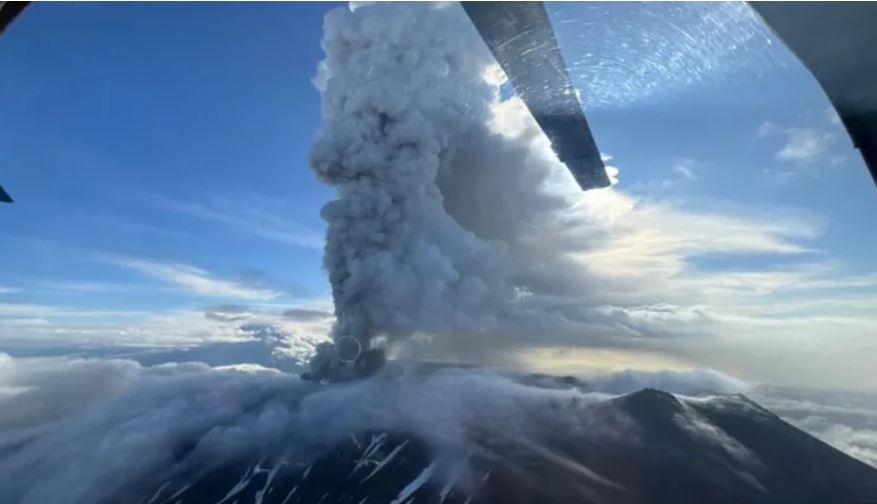In a dramatic geological event, Russia’s Krasheninnikov Volcano has erupted for the first time in over 500 years, spewing a towering ash plume into the sky and reigniting concerns about heightened seismic activity in the region. Located in the remote Kamchatka Peninsula, the volcano released ash up to six kilometers (3.7 miles) high overnight, according to Russia’s emergency ministry. Fortunately, there is no immediate threat to populated areas.
The eruption comes on the heels of a massive 8.8 magnitude earthquake that struck the region last week one of the most powerful quakes ever recorded. That tremor prompted tsunami warnings that extended as far as French Polynesia and Chile, and forced millions to evacuate. Experts believe the eruption of Krasheninnikov may be directly linked to this seismic event.
Olga Girina, head of the Kamchatka Volcanic Eruption Response Team, confirmed that the last recorded eruption of Krasheninnikov was in the 15th century, making this a rare and significant geological occurrence. She noted the potential connection between the recent earthquake and the volcano’s sudden activity.
Adding to the turmoil, a 7.0 magnitude earthquake struck the Kuril Islands just hours after the volcano erupted. Russia’s emergency ministry issued tsunami warnings for three coastal areas of Kamchatka, warning residents to stay away from the shore despite wave heights expected to reach only 18cm (7 inches).
The Kamchatka Peninsula, part of the volatile Pacific Ring of Fire, is known for its frequent earthquakes and active volcanoes. However, the awakening of Krasheninnikov after half a millennium underscores the region’s unpredictable and dynamic nature.
While authorities continue to monitor the situation closely, scientists caution that more aftershocks are possible in the coming weeks. The convergence of volcanic and seismic activity serves as a stark reminder of the immense forces at work beneath the Earth’s surface and the need for ongoing vigilance in this volatile corner of the Pacific.

